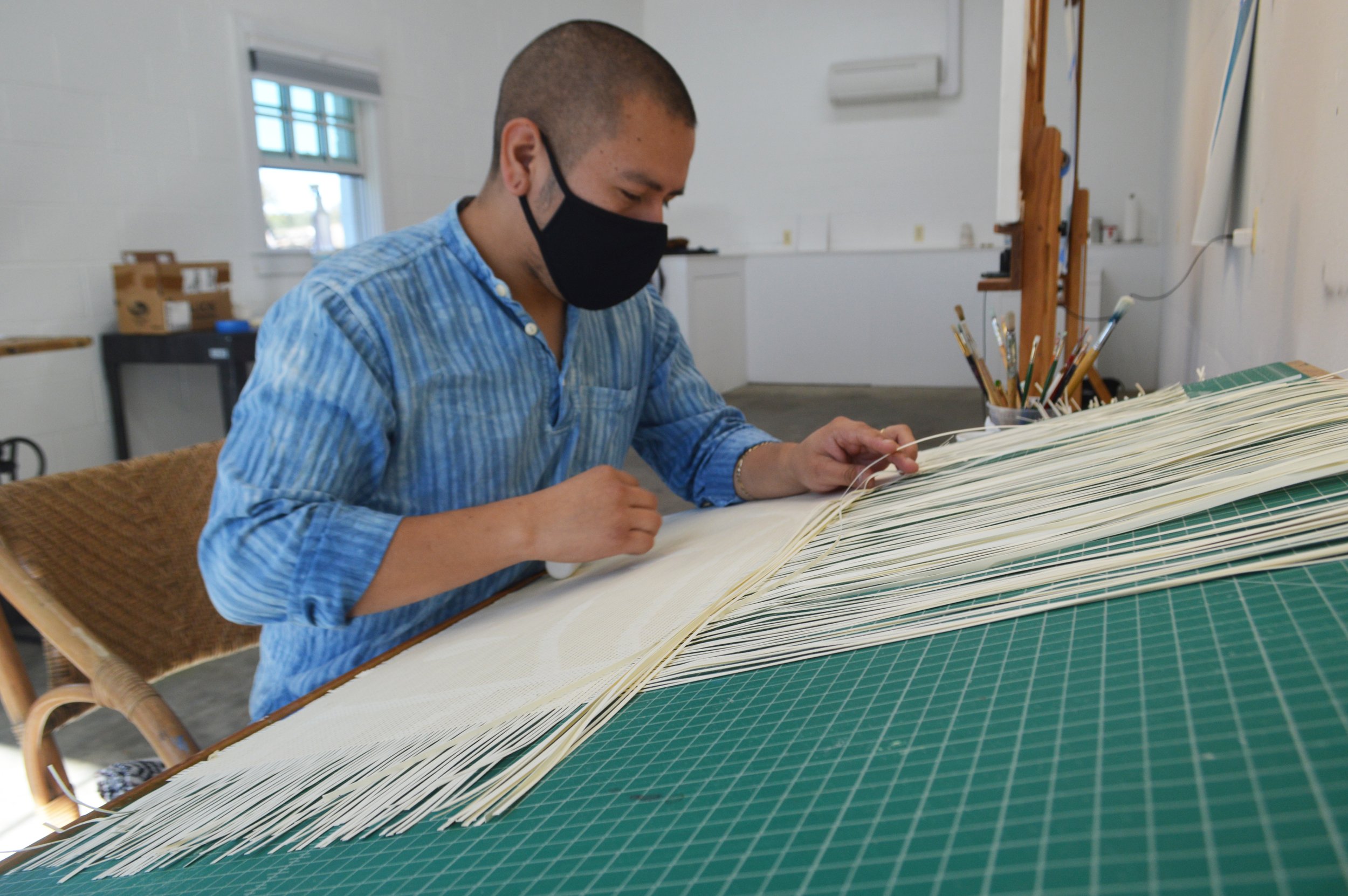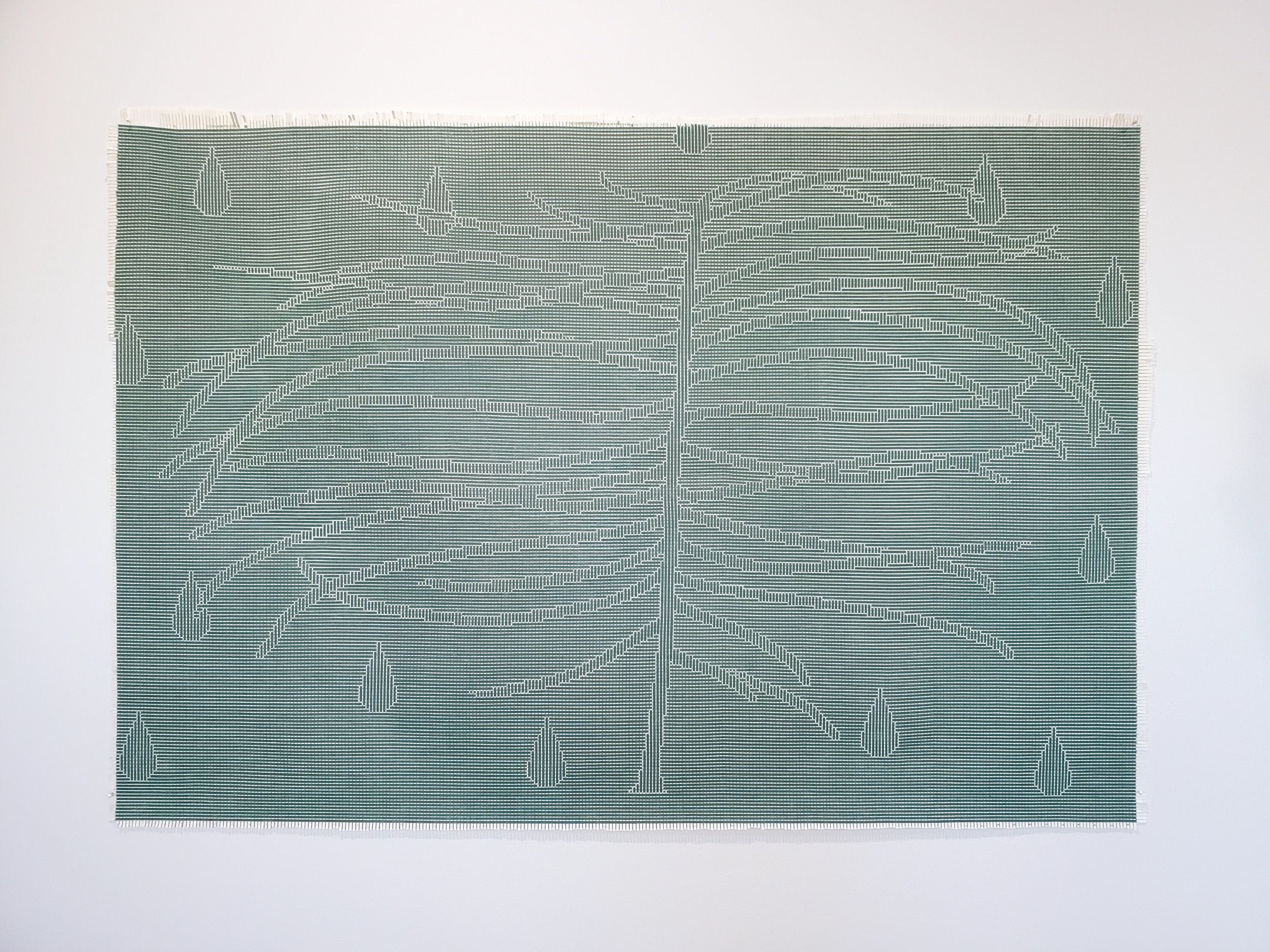Meet Our Fellows: Fidencio Fifield-Perez Talks Plants, Moments, and Curiosity
Emily Ellis
For many of us, a house is not a home without plants. Their scent, their taste, and the rustle of their leaves have the power to pull us back to certain times and places, connecting us with moments difficult to access otherwise.
Photo by Ryan Bach
Plants and the stories they carry feature prominently in 2021 Eliza Moore Fellow Fidencio Fifield-Perez’s work. Fidencio, who describes himself as a painter who “dabbles in weaving and print-making,” currently works and teaches in the Midwest. He was born in Oaxaca, Mexico, where he learned traditional techniques used in crafts to celebrate festivals and to mourn the dead. Paper – much of it discarded and reused - takes center stage in many of his pieces, which explore borders, edges, and the people who must traverse them.
During his residency at Oak Spring last fall, Fidencio found himself coming out of a years-long project called dacaments, which refers to DACA (Deferred Action for Childhood Arrivals) - an executive order enacted by former president Barack Obama in 2012 to offer protection from deportation for undocumented immigrants who arrived in the United States as children.
Applying to the program meant that Fidencio and many other immigrants were plunged into near constant contact with the U.S. government, essentially giving it “everything that we knew about ourselves - our locations, our whereabouts, where we were, when we crossed,” he said. The correspondence resulted in an incredible number of envelopes, receipts, and documents. In 2017, Fidencio began painting his collection of houseplants on the envelopes he used to maintain his DACA status, as the imminent repeal of the program under the new Trump administration cast thousands of people into uncertainty and mourning.
“It was really, truly a futile attempt at trying to document my home that I amassed for myself,” he said. “From then to 2016 I had been moving from graduate school to Chicago to a residency in Texas, and all the while just carrying my plants with me.”
Each painting brings Fidencio back to a particular moment, he said: the plant his husband gave him on their third date, or the split-leaf the couple rescued from a freezing porch on their fourth (it was covered in snow, so they had to take it!)
“All of those moments, I look at all of those envelopes, and the plants, and I could tell you every single story,” he said. “And so that's what that series was when I took this residency. I didn't know what I would be doing while I was here, I just knew that this was the place that had some of the earliest documentation of plants, and that in itself is a thing that fascinated me - about seeing something for the first time, naming it.”
After working on the series for years, Fidencio arrived at Oak Spring without a firm idea of a project to work on, but looking forward to exploring the Garden Library and immersing himself in the rural landscape. Inspiration came to him on his second day, when he and the other resident paused to rest by a 60-year-old willow tree during a walk around the foundation.
“We were just looking at all the birds, and the way that it was just moving - I think it was the simple fact that it was the first time that we, or I, had asked to just be present and not talk to students or talk about things, and instead just be present and absorb,” he said. “It was just the moment of being here.”
Fidencio set to work on a large paper weaving by the tree, braiding thin strips of paper together to create images of branches and leaves. While he had experimented with weaving tear-drop shapes with paper before, the piece he began during his residency at Oak Spring was his first attempt at creating an object, he continued.
“It doesn’t look like a lot, but it was a lot,” he joked, pointing out that even a small section of the weaving takes a better part of a day to create. He was able to garner some ideas from looking at materials in the Oak Spring Garden Library, he added.
“The woodcuts are sort of are similar, in that that they're linear in design and there's not a lot of overlapping,” he said. “They lend themselves to be reproduced in a weaving.”
As for what Fidencio hopes viewers take away from his work? Simple curiosity.
“Just be curious about how it's done, who did it, why they might have done it, but just be present and curious about how was it done - just really transfixed. I just want them to be enchanted for a little bit.”
“When I'm curious, I think that's when I might be my happiest,” he continued. “It's almost like playing.”
34x49 in.
Intaglio ink on woven paper
Photo from http://fidenciofperez.com/paper-weavings
Reflecting on his time at Oak Spring, Fidencio said he would encourage future residents to “take full advantage of everything you can.”
“Even things that you might not think are significant,” he said. “I had an emotional moment when Caitlin gave me a tour of the flower garden area at the BCCF, and we were just talking about dirt in Spanish and about language in general. So I’d also encourage residents here to talk to staff, and just ask them what they do.”
To learn more about Fidencio and his work, visit http://fidenciofperez.com/ or follow him on Instagram at @fidencio.f.perez.
To learn more about the Eliza Moore Fellowship and the Oak Spring Garden Foundation’s other opportunities for artists, visit www.osgf.org/fellowships and www.osgf.org/residencies.




